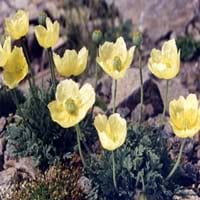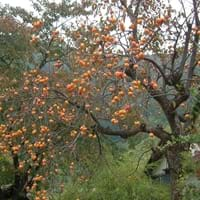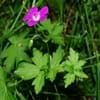Life Span
Perennial
Perennial
Origin
Russia/Siberia, Japan
China, Korea
Types
Not Available
Fuyu Persimmons
Hachiya Persimmons
Among(Ye mon)
Maru Persimmons
Habitat
Alpine Meadows, Rocky areas
Woodlands
USDA Hardiness Zone
5-7
6-10
Sunset Zone
3a, 3b, 4, 5, 6, 7, 8, 9, 14, 15, 16, 17
H1, 6, 7, 8, 9, 12, 14, 15, 16, 18, 19, 20, 21, 22, 23, 24
Habit
Clump-Forming
Pyramidal
Flower Color
Light Yellow, Yellow green
Light Yellow
Flower Color Modifier
Bicolor
Bicolor
Fruit Color
Not Available
Orange
Leaf Color in Spring
Gray Green
Green
Leaf Color in Summer
Gray Green
Green
Leaf Color in Fall
Gray Green
Yellow, Burgundy, Orange Red
Leaf Color in Winter
Not Available
Not Available
Leaf Shape
Lobed
Elliptic
Plant Season
Summer
Summer, Fall, Winter
Sunlight
Full Sun, Partial Sun
Full Sun, Partial Sun
Type of Soil
Loam
Clay, Loam
The pH of Soil
Acidic, Neutral, Alkaline
Acidic, Neutral
Soil Drainage
Well drained
Well drained
Bloom Time
Early Summer, Summer
Summer
Tolerances
Drought
Not Available
Where to Plant?
Ground
Ground
How to Plant?
Seedlings
Seedlings
Plant Maintenance
Medium
Medium
Watering Requirements
Average Water Needs, Never Over-water
Do not water excessively, Do not water frequently, Prefer drip-irrigation instead of Over-head watering
In Summer
Lots of watering
Lots of watering
In Spring
Moderate
Moderate
In Winter
Average Water
Average Water
Soil pH
Acidic, Neutral, Alkaline
Acidic, Neutral
Soil Type
Loam
Clay, Loam
Soil Drainage Capacity
Well drained
Well drained
Sun Exposure
Full Sun, Partial Sun
Full Sun, Partial Sun
Pruning
Cut or pinch the stems, Remove damaged leaves, Remove dead branches, Remove dead leaves
Remove damaged leaves, Remove dead branches, Remove dead leaves
Fertilizers
All-Purpose Liquid Fertilizer, as it is a flowering plant, use high phosphorous content fertilizer, Water soluble fertilizers
All-Purpose Liquid Fertilizer, Apply N-P-K
Pests and Diseases
Not Available, Red blotch
Caterpillars, Mealybugs, Nematodes, Red blotch
Plant Tolerance
Drought
Drought, Full Sun, Variety of soil types
Flowers
Showy
Insignificant
Flower Petal Number
Single
Single
Foliage Texture
Fine
Medium
Foliage Sheen
Matte
Glossy
Self-Sowing
No
Not Available
Attracts
Not Available
Birds
Allergy
Not Available
Not Available
Aesthetic Uses
Beautification, Showy Purposes
Bonsai
Beauty Benefits
Not Available
Not Available
Environmental Uses
Air purification
Air purification
Medicinal Uses
Not Available
Anthelmintic, Antitussive, Antivinous, Appetizer, Astringent, Demulcent, Expectorant, Laxative
Part of Plant Used
Not Available
Fruits
Other Uses
Not Available
Cosmetics
Used As Indoor Plant
Yes
No
Used As Outdoor Plant
Yes
Yes
Garden Design
Alpine, Edging, Mixed Border, Rock Garden / Wall
Edible, Fruit / Fruit Tree, Topiary / Bonsai / Espalier
Botanical Name
PAPAVER miyabeanum
DIOSPYROS kaki 'Hongsi'
Common Name
Japanese Poppy
Asian Persimmon, Hongsi Persimmon, Japanese Persimmon, Kaki
In Hindi
Japanese Poppy
Japanese Persimmon
In German
japanische Poppy
Japanese Persimmon
In French
Poppy japonaise
Persimmon japonais
In Spanish
amapola japonesa
El caqui japonés
In Greek
Ιαπωνικά παπαρούνας
Ιαπωνικά Λωτός
In Portuguese
Poppy japonês
Persimmon japonês
In Polish
japoński Poppy
japoński Persimmon
In Latin
Papaver Italica
Persimmon Italica
Phylum
Tracheophyta
Tracheophyta
Class
Magnoliopsida
Magnoliopsida
Order
Ranunculales
Ericales
Family
Papaveraceae
Ebenaceae
Clade
Angiosperms, Eudicots
Angiosperms, Asterids, Eudicots
Tribe
Papaver
Not Available
Subfamily
Paperveroideae
Not Available
Season and Care of Japanese Poppy and Japanese Persimmon
Season and care of Japanese Poppy and Japanese Persimmon is important to know. While considering everything about Japanese Poppy and Japanese Persimmon Care, growing season is an essential factor. Japanese Poppy season is Summer and Japanese Persimmon season is Summer. The type of soil for Japanese Poppy is Loam and for Japanese Persimmon is Clay, Loam while the PH of soil for Japanese Poppy is Acidic, Neutral, Alkaline and for Japanese Persimmon is Acidic, Neutral.
Japanese Poppy and Japanese Persimmon Physical Information
Japanese Poppy and Japanese Persimmon physical information is very important for comparison. Japanese Poppy height is 10.20 cm and width 10.20 cm whereas Japanese Persimmon height is 760.00 cm and width 550.00 cm. The color specification of Japanese Poppy and Japanese Persimmon are as follows:
Japanese Poppy flower color: Light Yellow and Yellow green
Japanese Poppy leaf color: Gray Green
Japanese Persimmon flower color: Light Yellow
- Japanese Persimmon leaf color: Green
Care of Japanese Poppy and Japanese Persimmon
Care of Japanese Poppy and Japanese Persimmon include pruning, fertilizers, watering etc. Japanese Poppy pruning is done Cut or pinch the stems, Remove damaged leaves, Remove dead branches and Remove dead leaves and Japanese Persimmon pruning is done Remove damaged leaves, Remove dead branches and Remove dead leaves. In summer Japanese Poppy needs Lots of watering and in winter, it needs Average Water. Whereas, in summer Japanese Persimmon needs Lots of watering and in winter, it needs Average Water.





